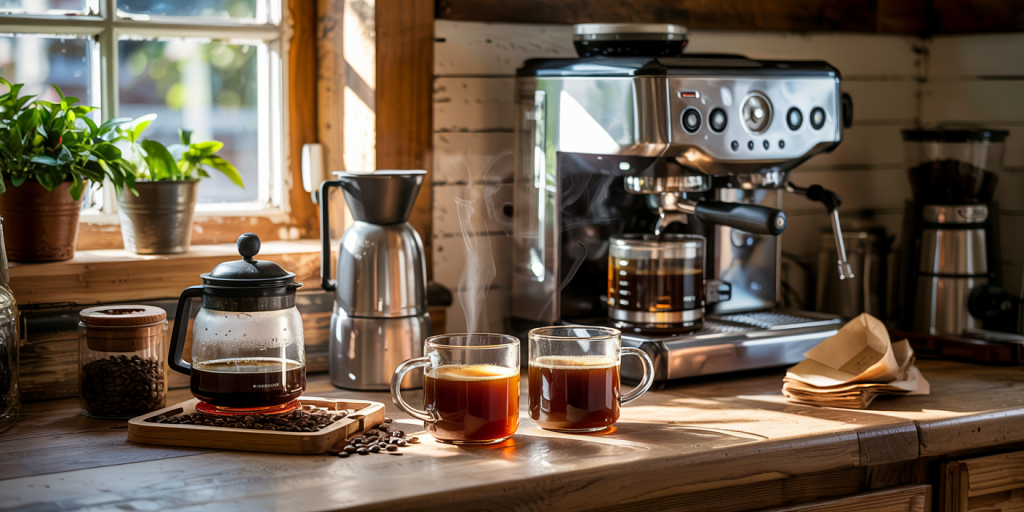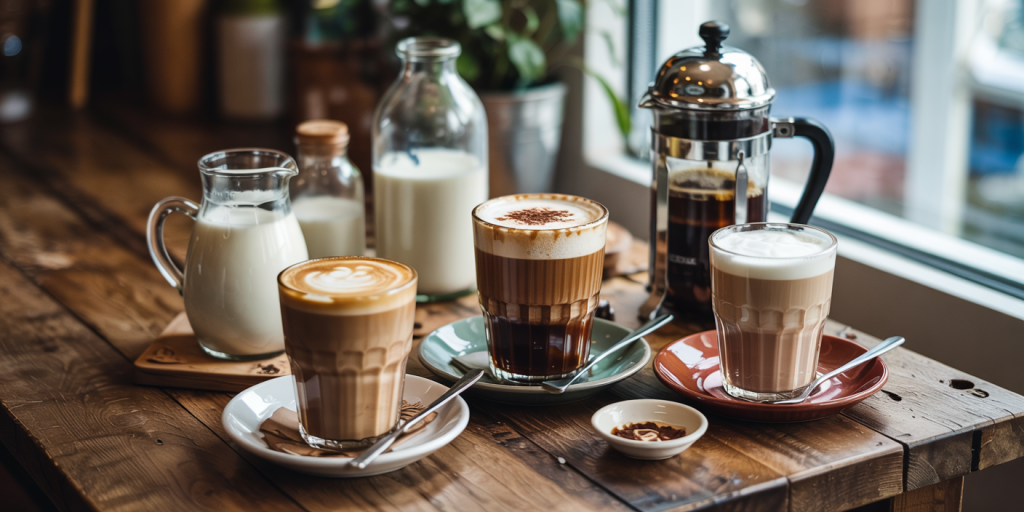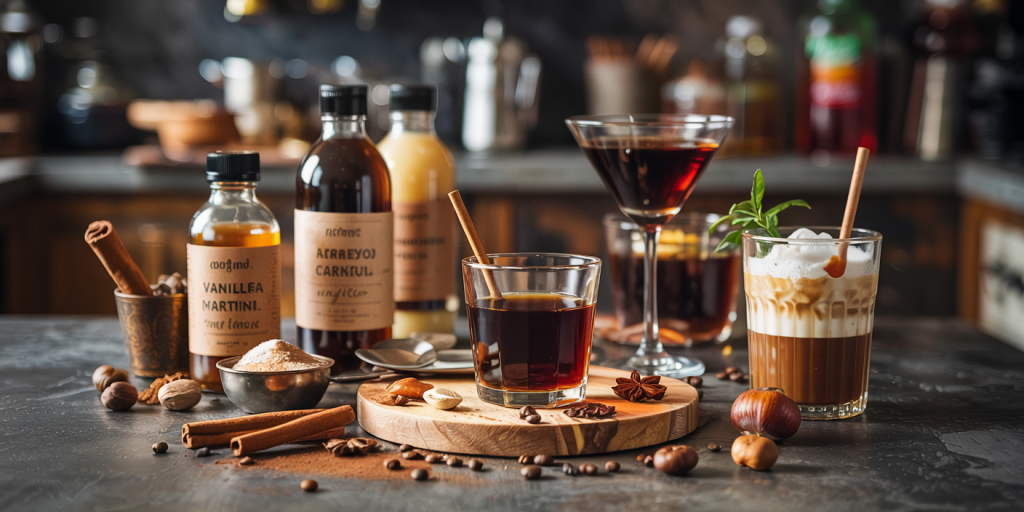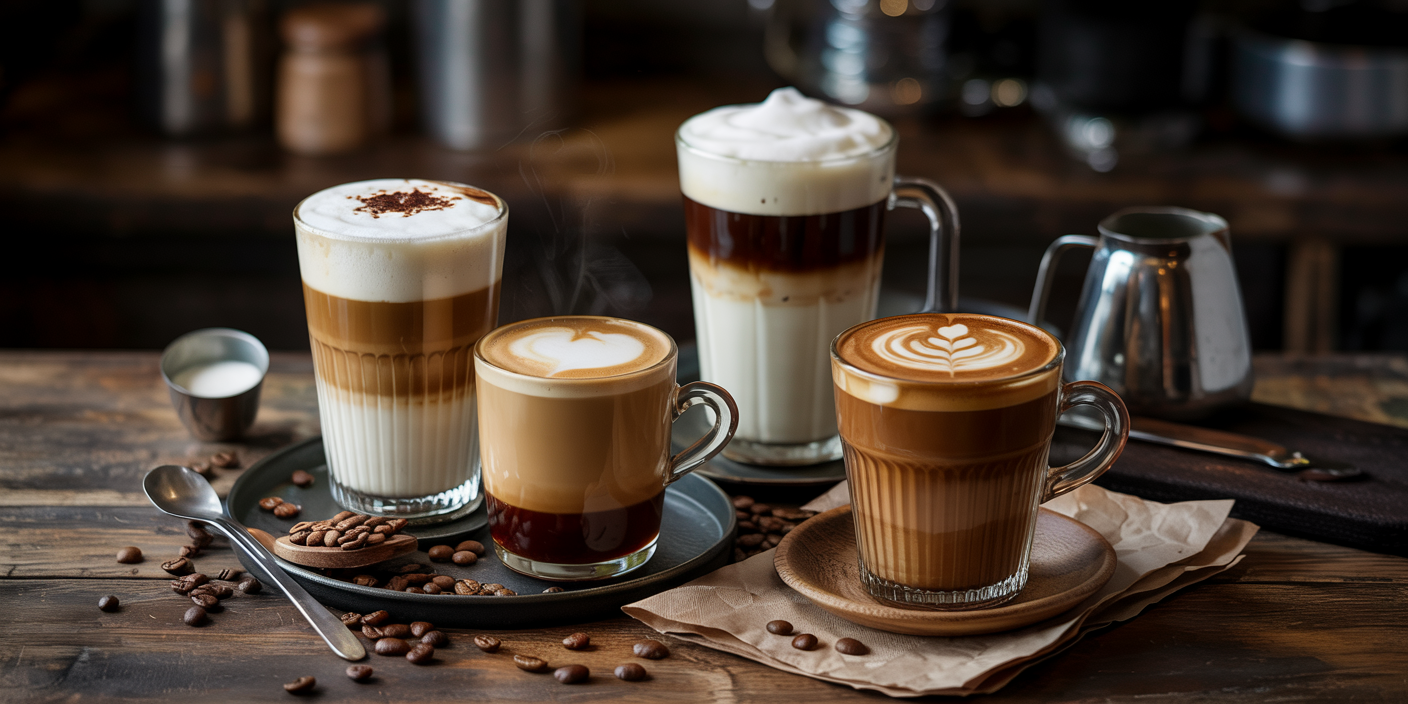Coffee is more than just a beverage—it’s a ritual, a comfort, and an art form. With nearly 64% of Americans drinking coffee daily, the surge in at-home coffee crafting speaks to a broader trend toward personalization and cost efficiency. According to the National Coffee Association, at-home consumption has grown by 6% in recent years, driven by innovation in home brewing techniques and the desire for café-quality drinks in the comfort of one’s home. Whether you’re a casual sipper or a dedicated barista enthusiast, mastering coffee recipes at home offers both enjoyment and a chance to experiment creatively with flavors and methods.
Preparing coffee at home allows you to tailor each cup to your preference, from the grind size and brew strength to the milk froth and flavor additives. Importantly, it also empowers people to save money, considering a single homemade specialty coffee costs on average 70-80% less than buying the same drink at a café. This article will explore a variety of coffee recipes you can prepare at home, from classic brews to innovative twists, all designed to enhance your coffee experience and expand your brewing skills.
Classic Coffee Recipes to Master
The foundation of any coffee journey starts with classics. These recipes are staples loved worldwide for their simplicity and rich taste. Mastering the traditional recipes can elevate your daily cup and build skills necessary for more complex brews.
Drip Coffee: The drip coffee maker remains one of the most popular methods in American households, making up over 45% of all coffee brewing devices in homes, according to a 2023 Statista report. To prepare a perfect cup, start with high-quality medium roast beans, grind them to a medium consistency, and brew with filtered water at about 200°F. This method extracts a balanced flavor, highlighting the bean’s subtleties without bitterness.

Espresso: For those with an espresso machine, pulling a perfect shot involves finely ground coffee, patted firmly into the portafilter, with about 9 bars of pressure and extraction time of 25-30 seconds. The crema—an indicator of a well-made espresso—is essential, rich and golden atop the shot. Espresso forms the base for many specialty drinks, making this skill critical for home baristas.
Both these recipes are highly customizable. For example, adjusting the coffee-to-water ratio in drip coffee impacts strength, while timing and grind size in espresso influence flavor intensity.
Comparative Table: Key Parameters in Classic Coffee Brewing
| Coffee Method | Grind Size | Water Temperature | Brew Time | Typical Coffee-to-Water Ratio |
|---|---|---|---|---|
| Drip Coffee | Medium | 195-205°F | 4-6 minutes | 1:15 to 1:17 |
| Espresso | Fine | 190-200°F | 25-30 seconds | 1:2 to 1:2.5 |
Iced and Cold Brew Variations
With warmer seasons and evolving tastes, iced coffee and cold brew have gained tremendous popularity, particularly among younger demographics. Cold brew sales have seen an increase of nearly 20% annually in North America, reflecting its smooth, less acidic profile.
Iced Coffee: This method involves brewing hot coffee and then chilling it with ice. The straightforwardness suits those who prefer the traditional coffee flavor, just cooler and more refreshing. For optimal taste, use a stronger coffee-to-water ratio during brewing to compensate for dilution by melting ice.
Cold Brew: Steeping coarsely ground coffee in cold water for 12-24 hours results in a concentrate with unique characteristics. This slower extraction reduces acidity and bitterness, making it gentler on the stomach and more suited to those sensitive to caffeine-related jitters. Cold brew can be diluted with water, milk, or cream and sweetened to preference.
Cold brew also offers convenience, as it can be prepared in batches for up to two weeks’ storage in the fridge. This efficiency has made it a staple for many home coffee lovers.
Practical Tip: When making cold brew, a 1:8 coffee-to-water ratio is recommended for balance, though some prefer a stronger 1:5 ratio for richer flavor that can be diluted before serving.
Milk-Based Coffee Drinks at Home
The art of combining coffee with milk has led to the creation of beloved drinks like lattes, cappuccinos, and flat whites, each defined by the ratio and texture of milk.
Latte: Comprising one shot of espresso with about 6-8 oz of steamed milk and a light layer of foam, lattes offer a creamy texture and a milder coffee taste. Steaming milk to around 150°F helps enhance its sweetness and mouthfeel. For beginners, frothing milk with a handheld frother or shaking heated milk in a jar can substitute pricey equipment.
Cappuccino: Distinguished by equal parts espresso, steamed milk, and dense foam, cappuccinos have a stronger coffee presence. Achieving a thick microfoam requires practice, but techniques such as rolling milk beneath a steaming wand or vigorously whisking heated milk can help homebrewers approximate the texture.
Flat White: Originating from Australia and New Zealand, the flat white uses espresso and steamed milk with little to no foam, resulting in a smooth drink that emphasizes the coffee flavor while softening bitterness.

Table: Milk-to-Espresso Ratios in Popular Drinks
| Drink | Espresso Shots | Milk Volume | Foam Amount |
|---|---|---|---|
| Latte | 1 | 6-8 oz | Light |
| Cappuccino | 1 | 4 oz | Equal to milk |
| Flat White | 1 | 4-6 oz | Minimal, thin |
Experimenting with alternative milk options—such as oat, almond, or soy milk—is also common due to dietary preferences, affecting both flavor and frothing behavior.
Flavor Enhancements and Specialty Infusions
Beyond the basic recipes, adding flavors can transform your coffee into a gourmet experience. Incorporating spices, syrups, or even alcohol offers endless customization.
Spiced Coffee: Blending spices like cinnamon, cardamom, nutmeg, or cloves directly into the grounds before brewing introduces complexity that pairs well with morning rituals. For example, an Ethiopian-inspired coffee with cinnamon and vanilla beans showcases regional influences and ignites the senses through aromatic compounds released during brewing.
Coffee Cocktails: For an evening twist, recipes such as the espresso martini or Irish coffee combine caffeine with alcohol for layered flavors and effects. Irish coffee, in particular, has sustained popularity since its creation in the 1940s, made by mixing hot coffee, Irish whiskey, sugar, and topped with lightly whipped cream.

Homemade Syrups: Crafting your own flavored syrups—vanilla, caramel, or hazelnut—allows full control over sweetness and ingredient quality. Boiling sugar, water, and flavor extracts create syrups that can be stored for weeks, providing cost-effective alternatives to store-bought options.
Combining these elements in creative ways can help develop a signature coffee style tailored to your palate.
Essential Tips for Brewing Success
Success in home coffee brewing hinges on several controllable factors: bean freshness, grind size, water quality, brew temperature, and equipment cleanliness. Purchased roasted coffee begins to lose freshness within weeks, so buying smaller quantities from reputable roasters or local cafés is advisable.
Grinding beans just before brewing maximizes aroma and flavor retention, as exposure to oxygen accelerates staling. Selecting the correct grind size impacts extraction rates—coarser for methods like the French press and finer for espresso.
Water ideally should be filtered to remove chlorine and impurities that can taint flavor while maintaining essential minerals for extraction. Water temperature guides should target between 195°F and 205°F for optimal solubility of coffee compounds, avoiding both under and over-extraction.
Regular cleaning of equipment prevents buildup of old coffee oils, which can create bitter or rancid tastes. Investing time and attention into these details enhances consistency and satisfaction with home-made coffee.
Future Perspectives in Home Coffee Brewing
Looking ahead, technology and sustainability trends are likely to reshape home coffee routines. Smart coffee machines featuring app connectivity and AI-powered brewing customization are entering the market, offering precise control over temperature, grind, and brewing time. These innovations could democratize barista-level coffee crafting, making professional-grade techniques accessible to beginners.
Sustainability is also becoming increasingly important. More consumers are shifting toward sourcing ethically grown beans with certifications like Fair Trade and Rainforest Alliance, emphasizing environmental and social responsibility. At home, composting coffee grounds and using reusable filters reduce waste, aligning coffee enjoyment with eco-friendly practices.
Developments in plant-based milk and flavoring alternatives offer expanded options for dietary inclusion without sacrificing taste or texture. Emerging trends such as nitro cold brew—infusing coffee with nitrogen for a creamy, effervescent feel—are likely to be adapted for home kits, widening the spectrum of available experiences.
As the community of home coffee makers grows, sharing recipes and tips through social media and online forums fosters continual learning and inspiration. Whether driven by technology or tradition, the future holds exciting opportunities for coffee enthusiasts to deepen their appreciation and mastery of coffee at home.
—
Mastering coffee recipes at home not only enhances your daily ritual but also transforms coffee drinking into a creative and rewarding experience. With these recipes and tips, you can enjoy café-quality cups while tailoring each brew to your personal tastes and lifestyle, all within the comfort of your home.

Deixe um comentário